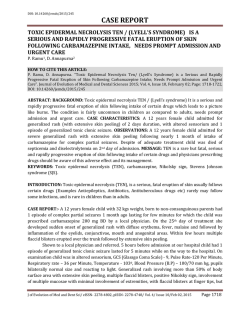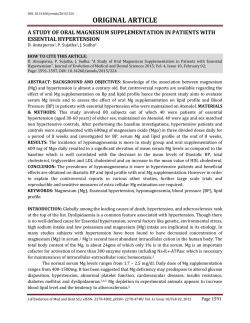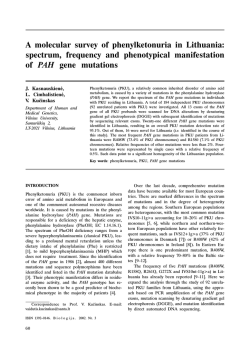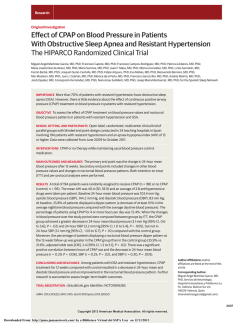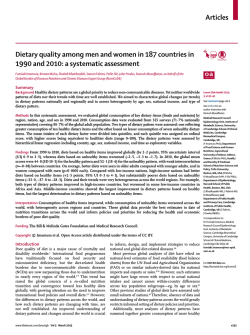
The Metabolic Syndrome and Pulmonary Vascular Disease
The Metabolic Syndrome and Pulmonary Vascular Disease ulmonary hypertension occurs commonly in a P variety of cardiopulmonary disorders. The current classification of pulmonary hypertension is composed of five categories. Group 1, pulmonary arterial hypertension (PAH), includes idiopathic PAH, formerly called primary pulmonary hypertension, familial PAH, and PAH associated with specific medical conditions such as connective tissue diseases, congenital heart disease, and portal hypertension.1 Enthusiasm for the treatment of group 1 PAH dates back to 1995 with the US Food and Drug Administration approval of IV epoprostenol, the first specific treatment for this often fatal disease. The US Food and Drug Administration approvals of oral therapies for PAH, including bosentan (2001), sildenafil (2006), and ambrisentan (2007), have generated further interest in PAH and its treatment. However, group 1 PAH is a rare disease. In 2006, a large French Registry estimated2 the prevalence of group 1 PAH to be 15 cases per million. In reality, the most common types of pulmonary hypertension seen in practice are those in group 2, pulmonary hypertension with left heart disease, or pulmonary venous hypertension (PVH), and those in group 3, pulmonary hypertension associated with lung disease and/or hypoxemia. It is critical to differentiate both PVH and pulmonary hypertension related to lung disease from PAH, as the treatments for PAH have not been adequately studied and may in fact be detrimental in patients with these other types of pulmonary hypertension. In this issue of CHEST (see page 31), Robbins et al3 evaluated 122 consecutive patients who were referred for the evaluation of pulmonary hypertension. The investigators found that PVH due to diastolic dysfunction was the second most common cause of pulmonary hypertension, after group 1 PAH. Patients with PVH more commonly had features of the metabolic syndrome, with ⬎ 94% of PVH patients meeting two or more criteria of the metabolic syndrome compared to 34% of patients with PAH. Patients with PVH had substantial, but less severe pulmonary hypertension than patients with PAH. Notably, the mean data for the group showed that in many PVH patients the transpulmonary gradient was elevated, suggesting a mechanism beyond just passive pulmonary congestion. Metabolic syndrome, as defined by the current National Cholesterol Education Program Adult Treatment Panel III, is composed of a cluster of www.chestjournal.org Downloaded From: http://journal.publications.chestnet.org/ on 02/06/2015 risk factors including impaired fasting glucose levels, elevated BP and triglyceride levels, reduced high-density lipoprotein cholesterol levels, and increased waist circumference.4 An estimated 76 million Americans meet the criteria for the metabolic syndrome.5 Factors associated with the criteria for the metabolic syndrome include increasing age (approximately 50% of men and 60% of women over the age of 60 years meet the criteria for metabolic syndrome), sedentary behaviors, and a Western dietary pattern with low intake of dietary fiber and higher intake of refined carbohydrates and saturated fats.6 –9 Whether the metabolic syndrome is a useful diagnostic tool for risk of cardiovascular disease (CVD) is debatable. In studies10,11 comparing the metabolic syndrome criteria to the Framingham risk score, the presence of metabolic syndrome either did not add to the risk prediction or did not perform as well as the Framingham risk score in predicting future CVD events. Beyond this debate, the presence of the metabolic syndrome is strongly associated with an increased risk of CVD as well as diabetes.12 Whether the presence of metabolic syndrome also confers increased risk for pulmonary vascular disease is unknown, although the current study suggests that this may be a plausible hypothesis. Patients are frequently referred for the evaluation of pulmonary hypertension based on an echocardiogram demonstrating elevated pulmonary artery pressures and normal left ventricular systolic function. As demonstrated by Robbins et al,3 many of these patients will not have group 1 PAH and may not be appropriate for PAH-specific therapy. The current study underscores the importance of definitely confirming the diagnosis with right heart catheterization and, when appropriate, left heart catheterization prior to embarking on PAH-specific therapy. Based on the current study, patients with two or more features of the metabolic syndrome are likely to have PVH, as opposed to PAH, although there was some overlap. Other clinical features that increase the likelihood of PVH include historical symptoms such as paroxysmal nocturnal dyspnea and orthopnea, ECG findings such as the absence of right-axis deviation and presence of atrial fibrillation, and echocardiographic findings including left atrial enlargement, left ventricular hypertrophy, and Doppler indexes of impaired diastolic function. With a larger data set, it may be possible to develop a “prediction score” with the hopes of reliably identifying those patients who are most likely to have PVH. In such patients, the optimal medical therapy for these underlying CHEST / 136 / 1 / JULY, 2009 3 conditions might be appropriate before proceeding to right-heart catheterization. An additional question is whether the modification of metabolic syndrome criteria would result in an improvement of symptoms and pulmonary artery pressures in patients with PVH. The modification of metabolic syndrome features relies on lifestyle modification. Dietary changes including increases in dietary fiber, and a reduction in simple carbohydrates can result in significant improvements in serum triglycerides and high-density lipoprotein cholesterol levels. The Dietary Approaches to Stop Hypertension (or DASH) diet can result in reductions of systolic BP of 7 mm Hg among patients with no history of hypertension, and 11 mm Hg among hypertensive patients.13 Increases in physical activity also assist in improvements in BP, in addition to improvements in waist circumference (a marker for visceral adiposity) and improvements in fasting blood glucose levels. The modification of diet to reduce BP and weight may be particularly important in this group, given the high prevalence of hypertension and obesity observed among patients with PVH. Optimal volume management, sodium restriction, and maintenance of sinus rhythm are also important aspects of medical management. Treating obstructive sleep apnea, which is also common in this population, would also be appropriate. While difficult to achieve, given the high prevalence of metabolic syndrome criteria found among patients with PVH, such a hypothesis would be worth investigating. Robbins et al3 have made a meaningful contribution to the literature with this series. While there are limitations related to the modest sample size, the retrospective nature of the analysis, and the lack of complete data, there are important messages to be derived from this study. PVH is common in patients with pulmonary hypertension and normal left ventricular systolic function. Features of the metabolic syndrome are frequent in patients with PVH. Invasive hemodynamics are required to confirm the diagnosis of PAH prior to commencing PAH-specific therapy. Among our future challenges are further characterization of the pathogenesis of PVH and optimization of the lifestyle and medical management of PVH. Elizabeth A. Jackson, MD, MPH Vallerie McLaughlin, MD, FCCP Ann Arbor, MI Drs. Jackson and McLaughlin are affiliated with the Department of Internal Medicine, Division of Cardiovascular Medicine, University of Michigan Health System. Dr. Jackson has served as a consultant and speaker for Pri-Med and McKesson. Dr. McLaughlin has received research grants from Actelion, Pfizer, and United Therapuetics, 4 Downloaded From: http://journal.publications.chestnet.org/ on 02/06/2015 and has served as a consultant and speaker for Actelion, Gilead, and Pfizer. Reproduction of this article is prohibited without written permission from the American College of Chest Physicians (www.chestjournal. org/site/misc/reprints.xhtml). Correspondence to: Vallerie McLaughlin, MD, FCCP, Associate Professor of Internal Medicine, 1500 E Medical Center Dr, SPC 5853, Ann Arbor, MI 48109; e-mail: [email protected] DOI: 10.1378/chest.09-0366 References 1 Simonneau G, Galie` N, Rubin L, et al. Clinical classification of pulmonary hypertension. J Am Coll Cardiol 2004; 43(suppl):S5–S12 2 Humbert M, Sibton O, Chaouat A, et al. Pulmonary arterial hypertension in France: results from a national registry. Am J Respir Crit Care Med 2006; 173:1023–1030 3 Robbins IM, Newman JH, Johnson RF, et al. Association of the metabolic syndrome with pulmonary venous hypertension. Chest 2009; 136:31–36 4 Grundy SM, Brewer HB Jr, Cleeman JI, et al. Definition of metabolic syndrome: report of the National Heart, Lung, and Blood Institute/American Heart Association conference on scientific issues related to definition. Circulation 2004; 109:433– 438 5 Lloyd-Jones D, Adams R, Carnethon M, et al. Heart disease and stroke statistics: 2009 update; a report from the American Heart Association Statistics Committee and Stroke Statistics Subcommittee. Circulation 2008; 119: e21– e181 6 Ford ES. Prevalence of the metabolic syndrome defined by the International Diabetes Federation among adults in the US. Diabetes Care 2005; 28:2745–2749 7 Wannamethee SG, Shaper AG, Whincup PH. Modifiable lifestyle factors and the metabolic syndrome in older men: effects of lifestyle changes. J Am Geriatr Soc 2006; 54: 1909 –1914 8 Ekelund U, Brage S, Franks PW, et al. Physical activity energy expenditure predicts progression toward the metabolic syndrome independently of aerobic fitness in middleaged healthy Caucasians: the Medical Research Council Ely Study. Diabetes Care 2005; 28:1195–1200 9 Lutsey PL, Steffen LM, Stevens J. Dietary intake and the development of the metabolic syndrome: the Atherosclerosis Risk in Communities study. Circulation 2008; 117: 754 –761 10 McNeill AM, Rosamond WD, Girman CJ, et al. The metabolic syndrome and 11-year risk of incident cardiovascular disease in the atherosclerosis risk in communities study. Diabetes Care 2005; 28:385–390 11 Stern MP, Williams K, Gonzalez-Villalpando C, et al. Does the metabolic syndrome improve identification of individuals at risk of type 2 diabetes and/or cardiovascular disease? Diabetes Care 2004; 27:2676 –2681 12 Gami AS, Witt BJ, Howard DE, et al. Metabolic syndrome and risk of incident cardiovascular events and death: a systematic review and meta-analysis of longitudinal studies. J Am Coll Cardiol 2007; 49:403– 414 13 Sacks FM, Svetkey LP, Vollmer WM, et al. Effects on blood pressure of reduced dietary sodium and the Dietary Approaches to Stop Hypertension (DASH) diet: DASHSodium Collaborative Research Group. N Engl J Med 2001; 344:3–10 Editorials
© Copyright 2024
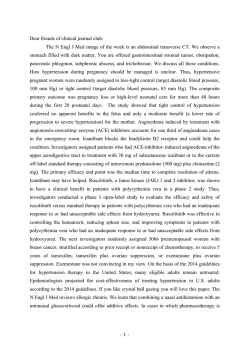
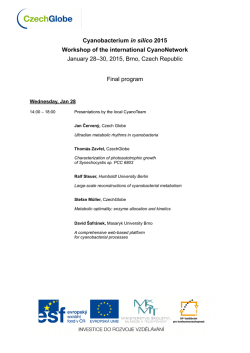

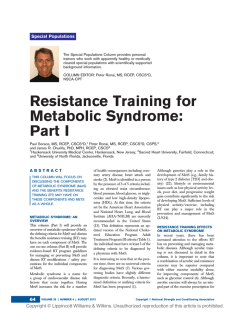
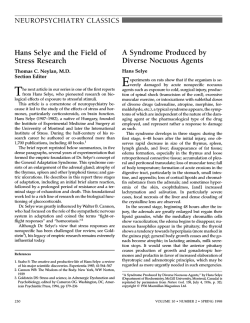



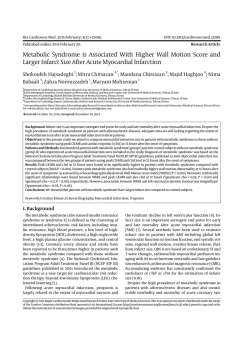
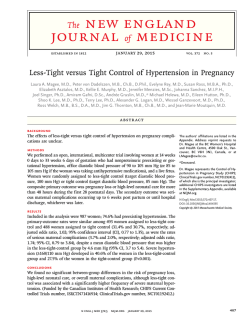
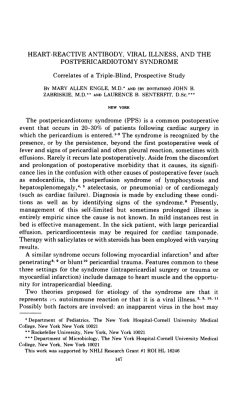
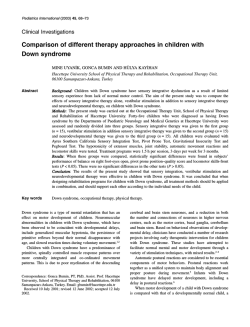
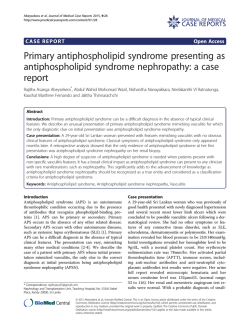
![Download [ PDF ] - journal of evolution of medical and dental sciences](http://s2.esdocs.com/store/data/000475167_1-3fd66abd823a299e32f0bb1f6c6f6a60-250x500.png)
